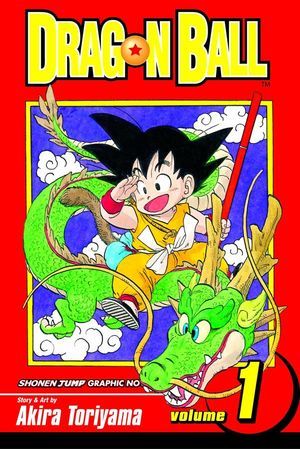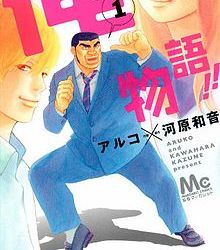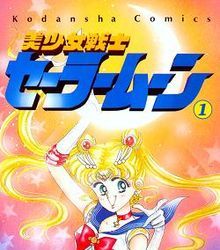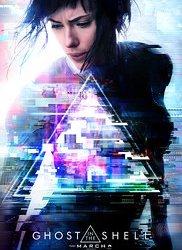#it's not a romance it's mostly a friendship-focused comedy and it's shounen by demographic
Explore tagged Tumblr posts
Text






I'm actually watching Tanaka-kun is Always Listless (because it's nice and short, just 12 episodes!) and it's actually cute, calm, clever, and fun... and Tanaka-kun's oddly relatable.
#Tanaka kun is Always Listless#Tanaka kun wa Itsumo Kedaruge#Detective Conan#Dragonball#One Piece#parody#Lamees' screencaps#I too can nap anywhere... he seems a bit pickier than me + I also had a classmate who'd wake me to go to the next lecture maaaan..........#I only didn't watch it all this time because I always assumed (based on Tanaka's design) that it was a romance and shoujo fffff#it's not a romance it's mostly a friendship-focused comedy and it's shounen by demographic
81 notes
·
View notes
Text
Week 2: Genres
So with the hard stuff out of the way, this week we can talk about genres. In anime and manga there can be multiple forms in just one story but there is always a primary genre that forwards the story. Some examples will be posted below.
Shōnen manga is typically characterized by high-action, often humorous plots featuring male protagonists. The camaraderie between boys or men on sports teams, fighting squads and the like is often emphasized. Main characters may also feature an ongoing desire to better themselves.
Such manga often portray challenges to the protagonist's abilities, skills, and maturity, stressing self-perfection, austere self-discipline, sacrifice in the cause of duty, and honorable service to society, community, family, and friends.

Considered the “Grandfather” of all Shounen Anime and Manga. Imitated quite heavily by Millennials.
Shōjo or shoujo manga is manga aimed at a teenage female readership. The name romanizes the Japanese 少女 (shōjo), literally "young woman". Shōjo manga covers many subjects in a variety of narrative styles, from historical drama to science fiction, often with a focus on romantic relationships or emotions. Strictly speaking, however, shōjo manga does not comprise a style or genre, but rather indicates a target demographic. Basically it can be of any manga style as long as romance plays a focus.

Cover of the first volume of My Love Story!! as published by Shueisha. The story follows Takeo Gōda, a tall and muscular student who doesn't have much luck with women, as every girl he likes ends up falling for his best friend, Makoto Sunakawa, who is charming and good-looking. This all changes when he saves Rinko Yamato, a petite shy girl who, above all other expectations, falls in love with Takeo, beginning a unique love story.
Magical girls (also known as mahou shoujo or majokko) is a subgenre of Japanese fantasyanime and manga which feature girls who use magic. Two popular magical girl animes during the 90′s were Sailor Moon and later Cardcaptor Sakura.

The first volume of Cardcaptor Sakura, published in Japan by Kodansha on November 22, 1996 featuring Sakura Kinomoto.

First tankōbon volume, released in Japan on July 6, 1992.
Seinen manga are manga marketed to adolescent boys and men old enough to read kanji. In Japanese, the word "seinen" literally means "youth", but the term "seinen manga" is also used to describe the audience of comics like Weekly Manga Times and Weekly Manga Goraku which are aimed at men into their 50s.
Seinen manga can focus on action, politics, science fiction, fantasy, relationships, sports, or comedy and while they may contain sexual content (as well as other mature material), it remains predominantly more infrequent than in the seijin-muke manga (Hentai).

A popular Seinen manga that just recently released a western live action release.....

with Scarlett Johansson as the lead. Another example of whitewashing in american films but lets not get into that.
Josei manga are Japanese comics aimed at women in their late teens on into adulthood. Josei manga are distinguished from "shōjo manga" (少女漫画) for younger girls on the one hand, and "ladies comics” or "LadyComi", which tend to have erotic content on the other. Readers can range in age from 15 to 44. In Japanese, the word josei means simply "woman", "female", "feminine", "womanhood", and has no manga-related connotations at all.
Josei comics can portray realistic romance, as opposed to the mostly idealized romance of shōjo manga, but it does not always have to be. Josei tends to be both more sexually explicit and contain more mature storytelling, although that is not always true either. It is also not unusual for themes such as infidelity and rape to occur in josei manga targeted specifically more towards mature audiences.

Synopsis: Yukari is a spirited high school senior in the process of studying for her college entrance exams. Sadly the prospect of subjecting herself to a meaningless dull life leaves her feeling depressed about the future. In a bout of frustration, Yukari begins to ignore her courses and she begins to hang out with a group of fashion design students. But what Yukari doesn't know is that this circle is known as Paradise Kiss, and they are run by a pair of young designers already making their mark on the Asian scene. Furthermore, while her life is going to soon change, it will not be due to the elite political or commerce based future her family may have hoped for, instead her life may eventually be set in a world of high fashion, with her strutting down the catwalk as the face of Asian fashion!
The common use of the term "slice of life" as a genre of anime and manga borrows from the theatrical meaning of the term, but also from the distinct literary meaning of the slice of life narrative technique. While "slice of life" is sometimes used to refer to anime and manga with realistic situations and dialogue, as in the theatrical and film sense, it is more commonly used to refer to episodic series which lack an overarching plot, conflict and ending, regardless of the surreality or realism of the setting itself, suggesting that the term's origin here derives more from the literary terminology rather than the theatrical terminology. Themes usually range from teen coming-of-age, interpersonal relationships, family, romance, to fantasy and science fiction. A common trait in slice of life anime and manga is their emphasis on seasonality or procedures. These usually dipict average daily lives of people in a set plot or story and usually accompanies another prominent genre.

Synopsis: High school student Makoto Itou first notices Kotonoha Katsura at the start of his second semester, freshman year. Immediately, he becomes entranced by her beauty, but his bashfulness doesn't allow him to approach her, even though they ride the same train every day. Instead, he snaps a photo of her in secret and sets it as his cell phone's wallpaper: a charm that, if kept under wraps, would supposedly help you realize your love. However, classmate Sekai Saionji spots the picture, but instead of ratting him out, she offers to help set him up with Kotonoha—going so far as befriending her just for him. Thus, the trio begins a rather impromptu friendship.

Synopsis: Nichijou primarily focuses on the daily antics of a trio of childhood friends—high school girls Mio Naganohara, Yuuko Aioi and Mai Minakami—whose stories soon intertwine with the young genius Hakase Shinonome, her robot caretaker Nano, and their talking cat Sakamoto. With every passing day, the lives of these six, as well as of the many people around them, experience both the calms of normal life and the insanity of the absurd. Walking to school, being bitten by a talking crow, spending time with friends, and watching the principal suplex a deer: they are all in a day's work in the extraordinary everyday lives of those in Nichijou.
Harem (ハーレムもの hāremumono; "from harem"?) in anime and manga is an emphasis on polygamous or love triangle relationships characterized by a protagonist surrounded amorously by three or more members of either the same and/or opposing gender, sex, and/or love interests.

Cover of volume 1 of the Japanese version of “Love Hina”. Example of a Female Harem.

The cover of the first volume of Ouran High School Host Club, with Haruhi (left) and Tamaki (right). Example of a Male Harem.
Other than traditional Japanese genres there are others like Suspense, Thillers, Occult, Comedy,etc.
Ecchi is an often used slang term in the Japanese language for playfully sexual actions. As an adjective, it is used with the meaning of "sexy", "dirty" or "naughty"; as a verb, ecchi suru (エッチする), with the meaning to have sex; or as a noun, to describe someone of lascivious behavior. The word ecchi has been adopted by fans of Japanese media to describe works with sexual overtones. In Japanese, the word ecchi is often used to describe a person's conduct, but in fandom, it has come to be used to refer to softcore or playful sexuality.
Works described as ecchi do not show sexual intercourse or genitalia, but sexual themes are referenced. Ecchi themes are a type of fan service, and can be found in most comedy shōnen and seinen manga and harem anime. This term and themes are used a lot in anime and manga.
I would mention Yuri, Yaoi and Hentai but will leave these links if you want to explore further but they tend to deal sexual themes. With “Yuri” dealing with girl on girl and “Yaoi” dealing with guy on guy.
1 note
·
View note